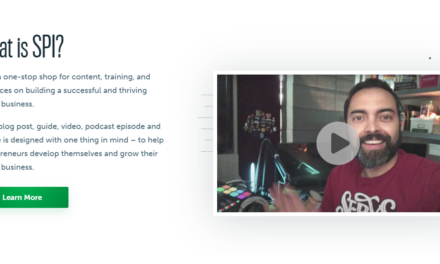Consider, for a moment, the latest staggering stats. Worldwide, people watch an average of 5 hours and 45 minutes of online video weekly—a 34% increase from 2016, based on the results of Limelight Network’s “The State of Online Video 2017” consumer survey. By 2021, a million minutes of video content will cross global IP networks every second, according to Cisco; at that rate, it would take you more than 5 million years to watch all the video crossing the network each month. And within 3 years, IP video traffic will account for 82% of all consumer internet traffic, per Cisco.
There’s a good reason why online video’s reach is so pervasive. “Video lets you cut through the noise of digital clutter. Why? Because video is human and authentic. It makes us feel. And, increasingly, how you make someone feel is the reason people choose to do business with you,” says Caren Cioffi, executive VP and general manager in the digital marketing and enterprise business unit at Brightcove.
Remember, it wasn’t so long ago that online video primarily consisted of checking out short clips on YouTube or watching a friend’s video on Facebook, notes Mike Milligan, senior director of product and solution marketing at Limelight Networks. “But consumers today are shifting to longer-form professionally produced online video content,” Milligan says. “This has a lot to do with the proliferation of internet-connected devices that allow people to watch this content whenever and wherever—from mobile gadgets like smartphones and tablets to streaming devices like Roku, Apple TV, and smart TVs.”
The Online Video Year in Review
The past year was a seminal year for screen watching. In 2017, Facebook videos got longer; the average video clocked in at just under 4 minutes versus 55 seconds in 2015, per Locowise. Video aspect ratios alternated more toward vertical and square. Consumers demonstrated that they wanted to produce, as well as consume, video content. This is evidenced by a rise in mobile journalist apps and sites such as Fresco News, Storyful, and Stringr. More local news organizations used smartphones to report live from remote locations such as hurricane sites.
Last year, major companies (such as The Walt Disney Co., Comcast, and YouTube TV) announced their foray into the streaming market to appeal to cord cutters. Sports leagues, such as the NFL, began licensing games and programs to online streaming services such as Amazon and Twitter.
Shoppable videos became more popular too, especially on Instagram. Livestreaming and 360-degree video took off, while adoption of 4K streaming proved to be slower than anticipated.
Dror Ginzberg, co-founder and CEO of Wochit, says that, while 2016 was online video’s breakout year, 2017 was more about figuring out what works—the distribution platforms, aspect ratios, monetization strategies, and original programming—and building on it.
“Last year, Netflix, Hulu, and Amazon emerged as production studios and OTT [over-the-top] providers. Now, we’ve got Facebook, Twitter, Buzzfeed, and more all entering the competitive field,” says Ginzberg. “We’ve also seen massive adoption among brands with the launch of Stories on Instagram, which has become a primary marketing channel in many industries.”
After 2017, the term “online video” seems redundant. “Online video is omnipresent, and its sources are now less important to the average person,” says Jun Group’s CEO, Mitchell Reichgut.
But the industry observed trouble spots in 2017. Quality of experience, for example, remains an issue. “Consumers are watching longer-length videos, often on mobile devices with wireless connections. This can increase the likelihood of problems such as video rebuffering, making for an overall poor-quality viewing experience,” says Milligan, adding that 61% of respondents to his aforementioned survey will stop watching an online video that rebuffers twice. “This year, content distributors must look to strengthen their delivery infrastructure to ensure that content is delivered at the highest quality possible.”
Online video providers also faced several difficulties in 2017. “Access to compelling content is tough, and the cost of content rights remains challenging. The cost to produce premium quality content is also high,” says Mike Chapman, global lead, media and entertainment and video strategy at Accenture. “In addition, the ability to scale subscribers is key to profitable growth, but it’s not easy to execute—and [it’s] where many providers struggle.”
Perhaps the most daunting obstacles that industry players have to clear are competition for eyeballs and pathways to monetization. “There’s so much quality content available to consumers for free today, and the marketplace is so competitive that their propensity to pay for content is low,” Chapman notes.
A Look Ahead at Online Video
The experts forecast a pivotal year for online video in 2018. “Companies will increase their use of artificial intelligence to help provide consumers with more personalized video experiences. And content quality and immersive experiences will continue to improve as video becomes more widely available in 4K and HDR,” says Chapman.
Others believe more user-generated video content and on-the-spot journalism are on tap in 2018, thanks to innovative and relatively inexpensive technology for the masses. “One of the biggest changes has come from Apple’s iOS 11, with its ability to capture video without using a third-party app. This will add to the revolution of faster and cheaper video production, editing, and repurposing,” says David Burrows, founder of the M+M Agency.
Others predict major advances in the coming year in the delivery of low-latency livestreaming. “Adobe Flash has traditionally been used for this, but the upcoming end-of-support by Adobe and the removal of Flash support from web browsers is forcing content distributors to look for new solutions,” says Milligan.
Expect more incentive-laced videos this year, as well. Findings from AdColony’s “2017 Consumer Sentiment Survey” showed that, when offered video ads that provide in-app rewards in exchange for watching, 40% of consumers consider these ads acceptable—compared to 22% acceptability for playable ads.
Additionally, “value exchange ad units—which let people unlock entertainment, points, or other digital content in return for engaging with advertising—will explode in 2018. They are non-interruptive and virtually fraud-free,” says Reichgut.
To autoplay or not to autoplay—that will be another important question this year. “Many publishers have already switched to more text and less sound to capture audiences on Facebook. But with Safari’s recent blocking of autoplay, I foresee that some publishers are going to have more issues drawing viewers in,” Ginzberg says.






